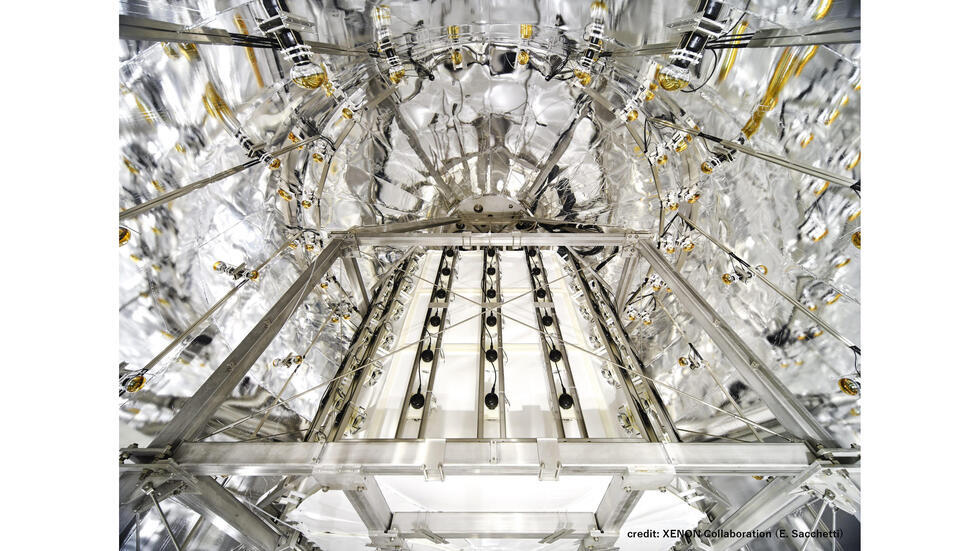
Mathematical and physical sciences
April 10, 2023
First WIMP Dark Matter Search Results from XENONnT
XENONnT is an international research project using liquid xenon to search for one of the greatest mysteries of the universe - dark matter. It is located deep underground at the INFN Laboratori Nazionali del Gran Sasso, Italy.
Scientists from the international XENON collaboration, an international experimental group that includes researchers from the Kobayashi-Maskawa Institute for the Origin of Particles and the Universe (KMI) and the Institute for Space-Earth Environmental Research (ISEE) of Nagoya University, have announced the first results from XENONnT. Thanks to a new detector, which is five times better at filtering out background noise than its predecessor, XENON1T, the researchers could conduct a much more sensitive search for phenomena that imply a "new physics”. This means that something cannot be explained by the Standard Model of Physics, including one of the most promising candidates for dark matter particles known as weakly interacting massive particles (WIMPs). The results of their study were presented at the special colloquium at Special Issue of L’Aquila Joint Astroparticle Colloquia on March 22, 2023.
For more details and researchers’ comments, please visit the KMI website.
XENON Collaboration
An international alliance consisting of about 180 researchers from 27 institutions in 12 countries and regions, mainly in Europe, the United States and Japan. Institutions in Japan include Nagoya University, the University of Tokyo, and Kobe University.
Weakly Interacting Massive Particle (WIMP)
A candidate for subatomic dark matter, it is an as yet undiscovered particle whose interaction with matter is very weak. Its mass, interactions and other detailed properties are not known, although its mass is thought to be heavy. One of the leading candidates is a supersymmetric particle predicted by a supersymmetric standard model of particle physics.